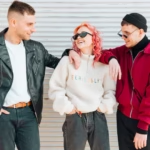Evan Holm is a kinetic installation artist who utilizes sound and music machinery to make sculptures which speak towards nature, tradition, music, poetry, time, and movement. His work has a poetic quality which is a must see through his beautifully documented videos on his website
When and where were you when you first started incorporating sound into your art?
Hmm. Let me think back to that. It must have been when I was in undergrad, one of my projects was a record player, that wasn’t powered by electricity but instead it was powered by water. So I made a really beautiful little fly-wheel of copper, and once it was placed under running water, the fly wheel, would turn and it would turn the turntable. Instead of the normal needle I used a needle stuck into a paper cone. Unless I’m forgetting something that is the first time I used sound in sculpture.
Did you take sound art classes or have a main influence in that field that got you interested?
I didn’t actually, in undergrad I was always kind of turned off by “sound artist” and that whole genre. And still am a bit to this day, I don’t know if I really consider myself a sound artist. Although I was just in a sound art festival. I’m really coming to the whole genre of sound art as a sculptor and installation artist perspective. I’m adding sound to sculpture because it’s just one more medium to work with. One more dimension. but I’m not a purist, who needs just sound as a form of art. It’s not something I’m too familiar with. I’m on shaky footing with it.
What did you make before you started to add sound? Was it similar sculptural installations?
It was, in undergrad I spent a lot of time in the metal shop. I did a lot of clunky steel sculptures. Our art department turned out quite a bit of those old rusting steel things. I’ve always been drawn to large scale sculpture. But I have noticed that my work now is getting more refined, I’m moving away from clunky objects.
I really like how you make 2D visual pieces that speak towards your larger installations. Did you start by making those or move into them? Pre- sound-kinetic installations or post?
About the same time. In undergrad I didn’t do any flat work. I think I took one painting class and didn’t really like it too much, never did printmaking. Then as I started practicing art in the real world I noticed that I was putting myself in a great dis-service just focusing on sculpture. Galleries just started inviting me to take part in group shows with wall space, so it was just an opportunity to do more shows and more work. It was a shaky ground for me, to not have training in it.
Did it have something to do with the Bay Area’s wall space and lack of sculptural space?
Yeah, I’m not sure how other art scenes are but it’s just easier for galleries to utilize their wall space and easier to sell. Even to this day all I sell is wall work. It’s just the only practical thing to do if you want to make a living off it. The practical reasons for doing wall work aside, I found it to be a fantastical challenge for me. and It does inform my sculpture/ installations and vise versa. I’ve really come to appreciate it. It’s a challenge to shrink all my thinking down to a two dimensional plane, I have a lot of respect for painters. In some ways sculptors have it easier, I can rely on scale, on movement, and three dimensional objects to introduce interest and intrigue into the piece, which can hold the viewer’s attention. Painters only have that one plane. I do really love to show both my wall work and larger installations in the same space because they inform and start to talk to each other.
Yeah, it’s like you’re creating an environment or an ecosystem in which they all live.
Exactly, I feel like that’s just where my art is moving. So, I try to work in a lot of different mediums.
You also have a lot of video on your website. How much is process and documentation part of your the piece and how important is that to you?
The documentation is essential to my career. Before I started documenting my work with video I was just doing still images. A good friend and videographer, Brian Lilla pulled me aside and said, “Evan, we’ve got to start filming your work. It’s moving, and you just can’t capture it with still images.” He started offering his services to me. It was his idea to film me putting it together. He thought it was necessary for the artist to kind of show how everything is put together. So really, I owe it to Brian Lilla.
The videos are beautiful. They really help you virtually interact with the piece because they interact on a similar level. They go up close and focus on details, and they move you back to see it as a whole. It’s allowing you to investigate it in the same way you would in person. So they are a beautiful documentation of your work but even more than that, they are also talking about process and time and construction. (video recommend Transistor Hive)
And none of those videos capture actually fabricating which is very important to me. It’s just my favorite thing in the word to be in the studio working to bring this thing into existence. I’ve never felt the need to share the process of that to the public. Brian also filmed the short documentary of bringing Submerged Turntable to the SFMOMA. I wasn’t too comfortable speaking, so we did just movement and action but I really did want to show the general public how much work it actually takes to bring a sculpture like that from one place into another. Most of my work can stand alone but Submerged Turntables isn’t ever shown without me in it. Since it’s like a performance, documenting it was very important. All my other work can function without me but I’ve got a strange relationship with that one.
So how was setting up at the California Academy of Sciences/How long did it take?
They gave me a 2 hour window, which was virtually impossible.
Oh my god, how did you do that?
I got myself really organized. It takes at least a small moving crew to move that piece and there is 100 different components that go into it. A lot of it is electronics, reverb pedals and wires and plugs that have to go from point A to B and so on. So I knew that we had almost impossible time constraints to work within but I really wanted to come through and perform in that space. I really like that museum’s mission. I made lists of materials and a flow chart. They graciously offered me 3 volunteers and I brought my wife and another good friend along with me. I created a work flow chart so everyone knew their jobs because we couldn’t waste any moments of time.
Was there any pre-assemble.
Yeah a bit, some of our sound equipment. Most of it has to be disassembled to fit in the moving truck. It took 1:45 to set up, which allowed us to brush our teeth and change before performing for 3 hours.
You seem to jam a lot with nature and I’ve read that you grew up in Seattle by the wilderness, did you build a lot of forts growing up?
Indeed I did, I build quite a bit of forts. They were back before I knew how to build things very well. I built them with my neighborhood friends and we would make log forts with no roofs, and sometimes we’d build sheet forts in the woods, also sofa cushion forts in my living room.
Oh yeah, yeah, it feels like a fort when your in there. I get a good feeling when I’m in it.Do you still go out and spend a lot of time in the wilderness?
Yeah, my wife and I backpack and recently been doing some mountaineering. My wife and I lived in a treehouse after college that we build in the Santa Cruz mountains, so the fort building continues. We promised ourselves that sometime in the future we will build another one.Awesome, what was your tree house like?
It was beautiful, we found a circle of 4 redwoods that were in roughly a rectangle. We built a floor system between them about 60 feet up in the air.So we had a loft, kitchen and a desk for my art studio. I was making smaller work then. We had a roof and were building the walls out of windows, then summer came around we didn’t feel like we needed to finish the walls. Once winter came back around it was time for us to go.Is it still there?
Yup, it’s still there, I visit it about once a year. The person who owned the land got nervous about people living up in the trees so no one lives there now.
So what is your studio environment like? Do you listen to music while you work? radio? TV? What are you listening to at the moment?
Music, almost all the time music. But this morning I was listening to NPR.
Were you listening to the program on melanoma?
I was
haha, I was too.
Right next to NPR, I get this pirate station, (tunes radio) so I listen to this a lot of the time. Other than that I keep my studio space spotless, it affects my mental space. I often clean to get out of stalemates with my sculptures.
When do you usually work? Are you a morning person?
I usually keep regular office hours, 9-5. I’m a full-time artist right now so it’s really nice. I try not to work on weekends, it’s usually Monday -Friday.
Congratulations on being full-time right now. My next question was do you have a day job so I guess I’ll ask instead, Have you ever had a day job and if so what was it?
I guess it’s a little bit of free flowing. It depends on the stage that the sculpture is in. Some times I’m sketching and designing. Then when I get to fabricating it just full on fabrication. Then there is quite a bit of office stuff. I’m pretty surprised what a large part a computer plays in the lives of an artist.So what’s next? What are you working on now?
This is my next piece that I’ve been working on for about 4 months. This is a larger sketch of it. The dimensions are about 60 feet long by 10 feet. This is a top view and side view. These are 5 wheels I’ve made inspired off of wool spinning wheels. So I made them very delicate. Just to establish the feeling of tradition. Then instead of wool connecting them it’s cassette tape. In the center there is a tape mechanism transport and tape reader head. Then floating above both of these clocks is this lacy cloud-like structure and over it all I sift about 300 lbs of flour on top of it. So it becomes this lovely winter like setting. The part I am still deciding is what kind of content I’ll be putting onto the cassette tape. I’ve done music in the past but this time I want to just do voice; either stories or poetry.Is there anything exciting coming up like shows? Residencies? Large Installations?
No, next I’m going to just find some empty warehouse space to rent out and set this up to film it and then start sending that out and shop it around. I hope that by the end of August I’ll have it documented. I’m kind of excited to just go non-show for a while and do a self-imposed residency and work without the deadlines. Shows take up a lot of time, especially as an installation artist, even when you’re showing old work it takes about a week or so to set it all back up and bring it back to life again. So I’m just going to hibernate for a while and make some new work.You can view all of Evan’s work and his amazing documentation/ video/ performances on his website.
A Special thanks to Lauren Crew and Brian Lilla for the documentation and photographs used in this article.









